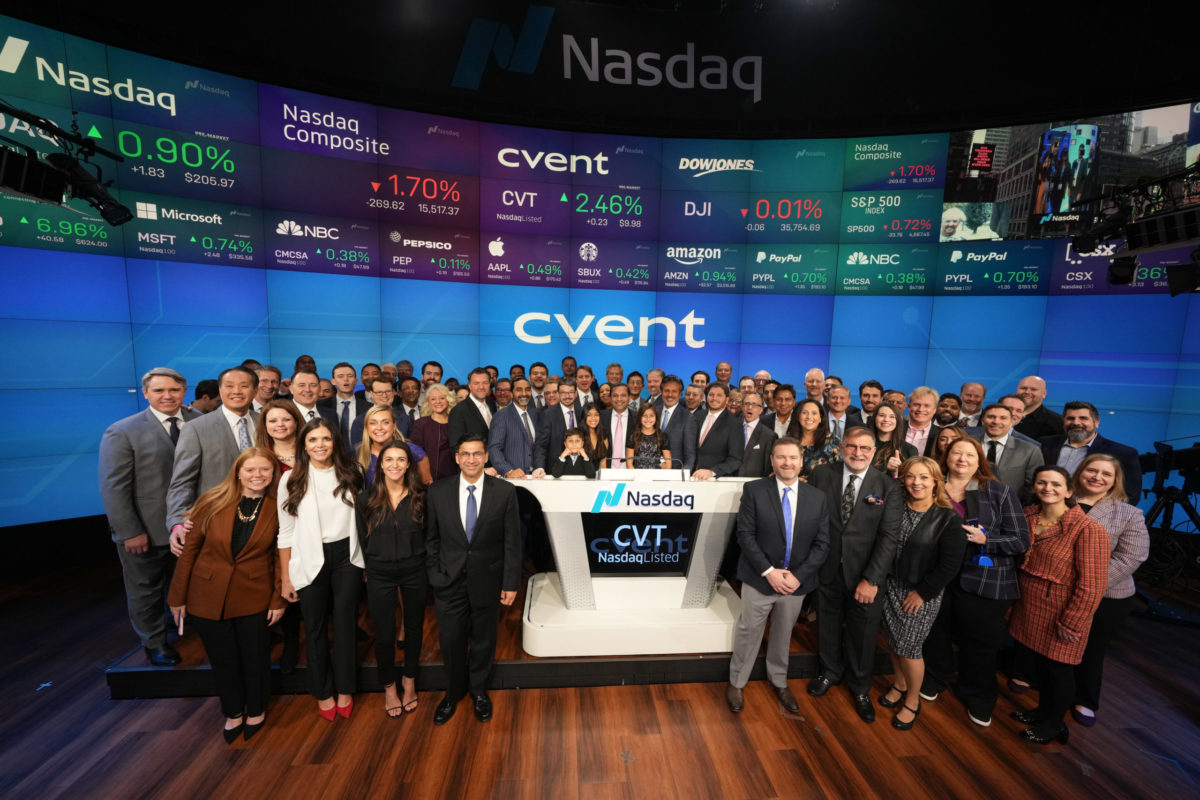For Cvent, the last 18 months brought many changes as the event tech company navigated a shift to virtual and hybrid events.
But this week, the Tysons Corner, Virginia-based company emerged as the newest publicly-traded company in the DC area.
“I think it’s a reflection, not just of us, but of the industry and the passion people have for this space and the willingness people have to want to get together,” said Cvent Chief Marketing Officer Patrick Smith.
Following a merger with special purpose acquisition company Dragoneer Growth Opportunities Corp. II, Cvent went public on the Nasdaq Thursday in a deal valued at $801 million. This marks the second time the 22-year-old company has made its debut in the public markets. The first came via a traditional IPO in 2013 on the New York Stock Exchange. Then, an acquisition by Vista Equity Partners took it private in 2016.
So what led an event tech company back to the ranks of public companies less than two years after the pandemic brought upheaval to its industry? The ability to maintain its rigor in growth and innovation is an ideal the 4,000+-employee company has relied on since March 2020, when the pandemic’s health and safety restrictions left IRL events canceled and the company had no choice but to pivot to the virtual event space.
When the pandemic first arrived, Smith said, Cvent quickly had to figure out the best pathway forward.
“The first thing we did was really focus on our customers and their needs. They were canceling events and they needed a path forward and we needed to give them perspective,” Smith said. “So we doubled down on the thought leadership that we had to really get people together and talk about: how do we navigate through this?”
After it made the decision to move to virtual events, Cvent pushed forward with plans to build its own virtual event platform, which launched in August of 2020 at its annual user conference. The company built a product with live chat and Q&A options, polling and attendee messaging, as well as capabilities to watch events live or on-demand at a later date.
As the company built its technology, though, Smith said it noticed a change in the overall events industry. Even with the return of in-person events, Smith said many still want virtual options, as well, to expand the potential audience. So Cvent adapted for hybrid events, as well. With the rise of virtual options, he said, event dates have started to expand. Instead of focusing on just the few days an event is being held, organizers are expanding the experiences to include agenda launch days and pre-networking ahead of time, as well as taking time to get feedback from attendees.
“There are a lot of interesting things happening in the marketplace that we like, and one of the central ideas is the notion that an event doesn’t just have to be the event dates,” Smith said. “It doesn’t have to be two days in August. You need to think about engaging your audience before the event and after the event, so event days are blurring.”
Following the public offering, Smith said Cvent plans to continue innovating, using the funds to invest in its own products. It’ll be adding to its supplier network, which was previously focused solely on hosting IRL events. Now, it will add information on virtual providers and production studios. It’s also rolling out an app marketplace for event technologies.
Overall, though, he hopes the public offering can continue to grow the event tech industry.
“It’s really paving that way of connecting up the ecosystem because we’re a market maker at the end of the day,” Smith said.







